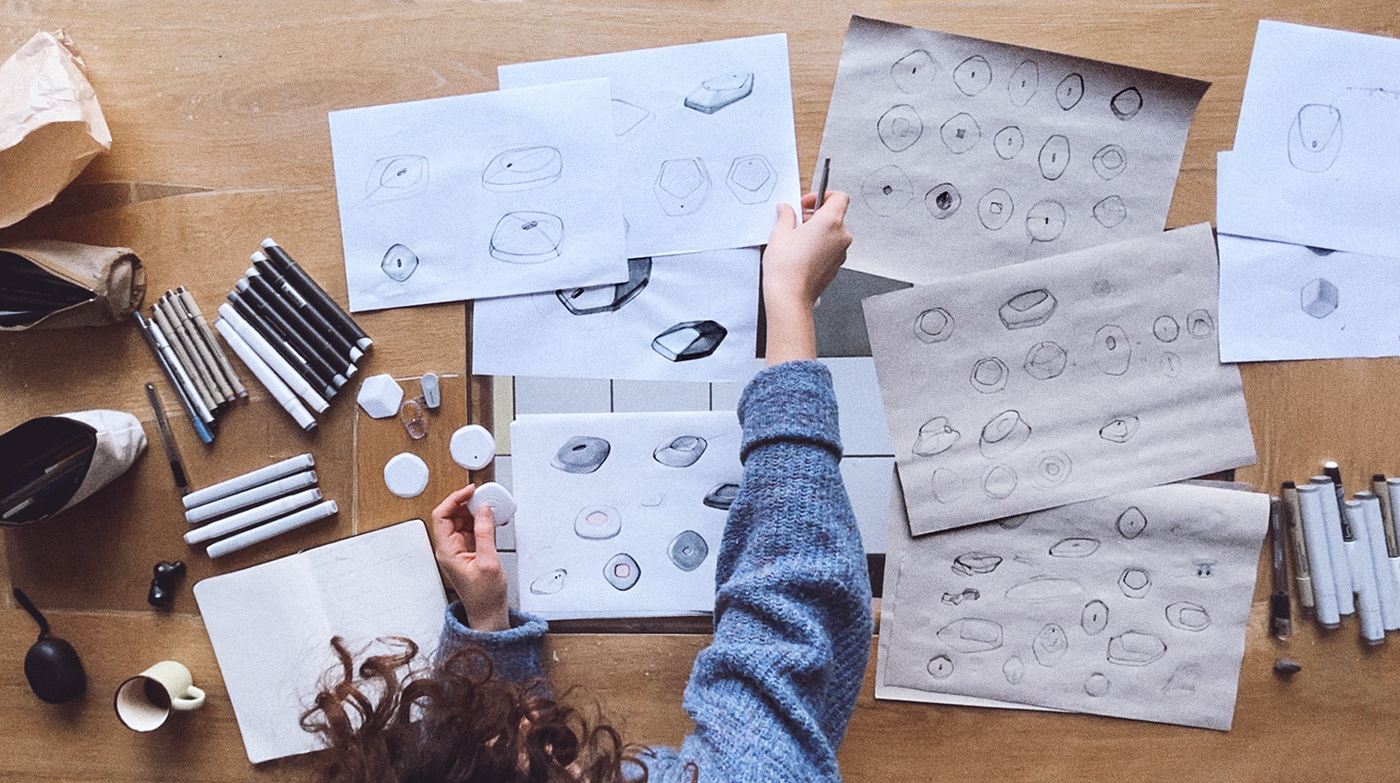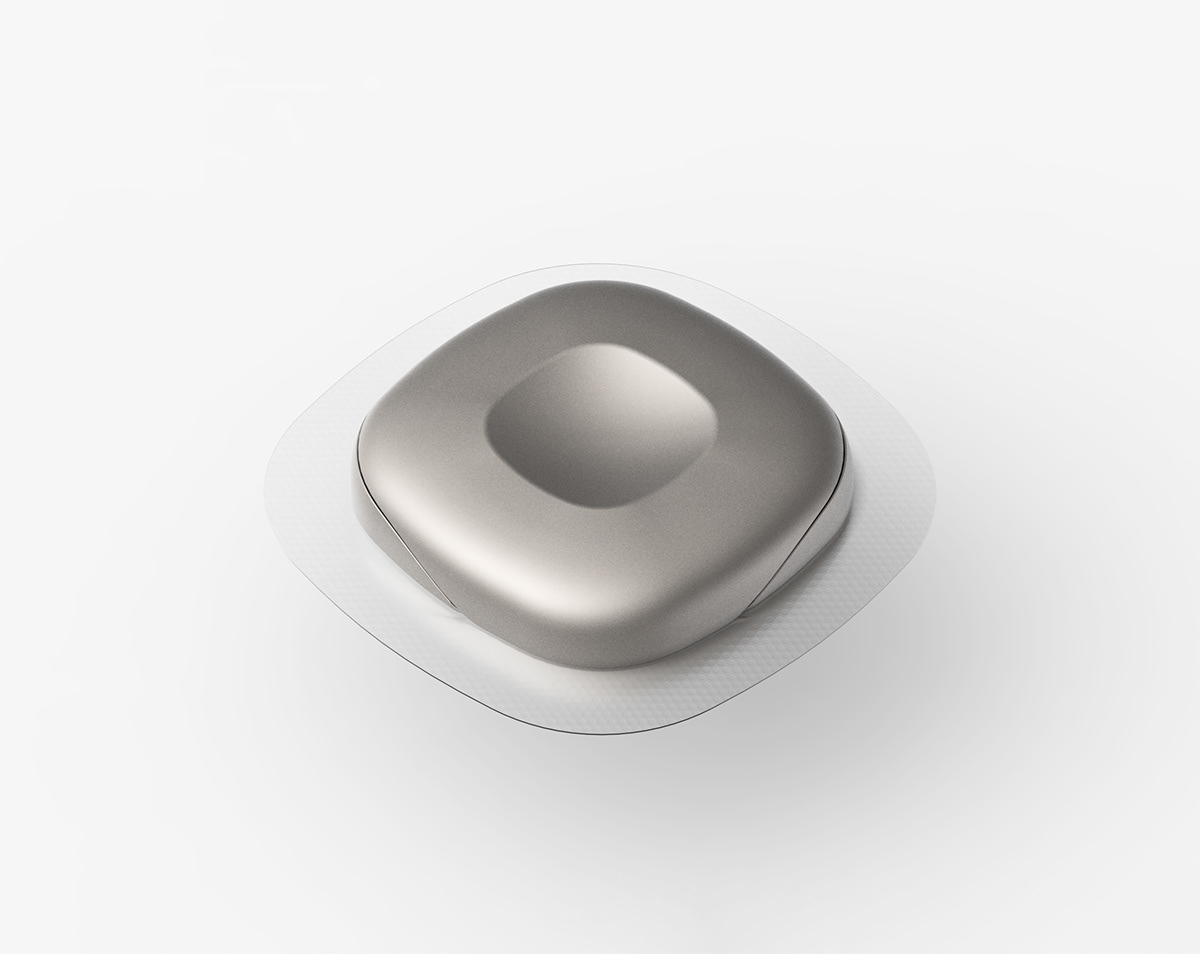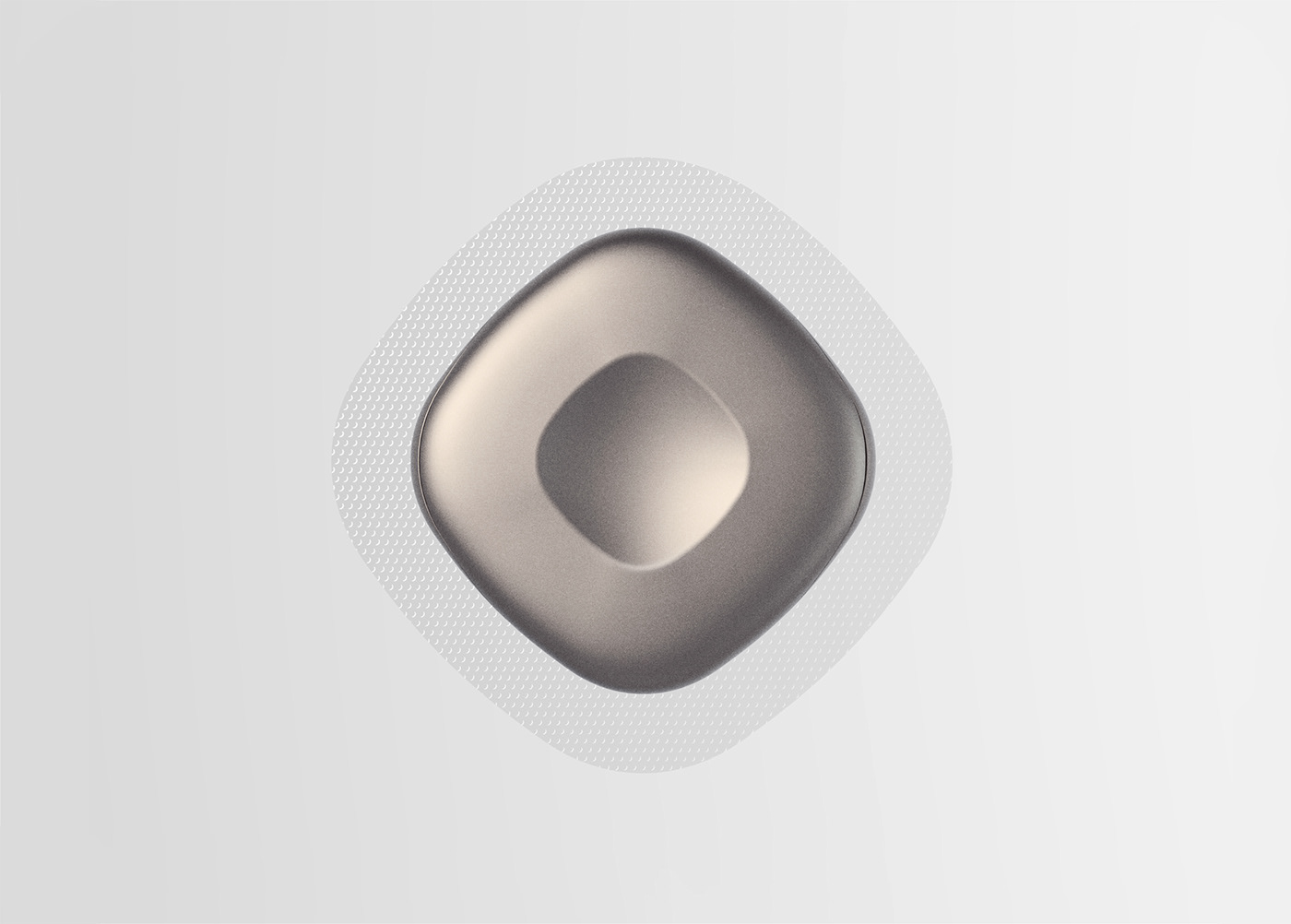Sugar Spy
better health
CGM (continuous glucose monitoring) technology is a cutting-edge system that enables real-time monitoring of glucose levels by a device attached to the skin that measures 24/7 glucose levels and shows it on digital devices like phones, smart watches, or special devices for glucose monitoring. Most often used by diabetics, which reduces finger pricking, which is necessary with traditional glucose measuring. Helps with managing healthy glucose levels, and better insulin calculation.






The design goal was to create a nonsterile-looking medical product that is aesthetically pleasing, visually appealing, and can be seamlessly integrated into various styles and fashion choices. The intention was to develop a device that goes beyond the conventional medical appearance, aiming for a simple, beautiful, and tactile design that can be worn as a delicate accessory.
This product was specifically designed to be versatile and adaptable to different occasions, allowing it to be worn at any time and place. Whether it's during professional engagements, social gatherings, or everyday activities, the device was intended to blend effortlessly with the wearer's personal style and preferences.
By incorporating elements of elegance, sophistication, and subtlety into the design, the goal was to remove the stigma often associated with medical devices and create a more inclusive and empowering experience for users. The intention was to make individuals feel confident and comfortable while using the product, enabling them to showcase their personal style and express themselves without any limitations.




The whole cgm system includes a sensor, transmitter, applicator, and receiver. The applicator inserts the sensor under the skin. Sensors use an enzyme called glucose oxidase, which converts the glucose in the body into hydrogen peroxide and reacts with the metals inside the sensor, creating an electrical charge which travels to a computer chip where it is translated into blood glucose levels and then is transmitted to receiving device wirelessly.
Separating SugarSpy into two pieces not only enhances its sustainability but also extends the usability of its components. While the sensor portion may have a limited lifespan of up to 14 days, the transmitter component has the potential to be utilized for up to 5 years, significantly increasing its longevity.
By separating the sensor and transmitter, users can replace the sensor module at regular intervals while retaining the durable and long-lasting transmitter. This design approach reduces electronic waste as users don't need to discard the entire device after each sensor expiration. Instead, they can simply detach and replace the sensor, minimizing the environmental impact associated with the product.








A user-friendly interface is developed to display the glucose data to the user. The interface provides real-time glucose readings, historical data, visualizations, and personalized recommendations for managing glucose levels effectively. The system has the capability to generate alerts and notifications when glucose levels exceed or fall below certain thresholds. These alerts are sent to the user's mobile device, caregiver, or healthcare provider to ensure timely interventions.












